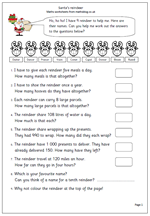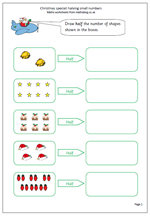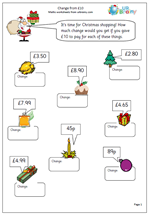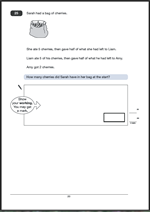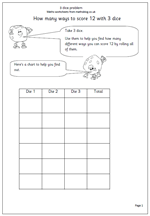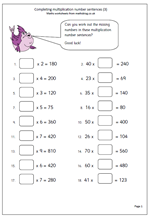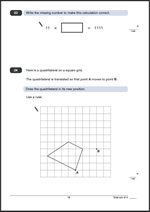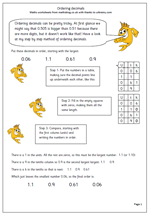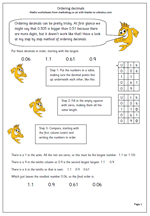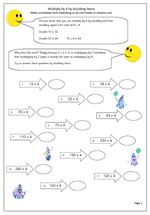More Christmas worksheets are available at:http://pages.urbrainy.com/happy-christmas-2011
We continue with our seasonal worksheets with some reindeer questions, probably best suited to children in Year 4 upwards.
Everyone knows about Rudolf, the red-nosed reindeer, but far fewer people know that there are eight others to go with him!
Santa’s reindeer pull the sleigh for Santa and help him deliver the presents. The nine names are based on a poem written in 1823 called, ‘A visit from St. Nicholas’, by Clement Moore which named eight reindeer:
Dasher
Dancer
Prancer
Vixen
Comet
Cupid
Donner (originally Dunder)
Blitzen (originally Blixem)
in a little known verse:
‘More rapid than eagles his coursers they came,
And he whistled, and shouted, and call’d them by name:
“Now, Dasher! Now, Dancer! Now, Prancer, and Vixen!
“On, Comet! On, Cupid! On, Donder and Blitzen!’
The popularity of the song, ‘Rudolf the Red Nosed Reindeer led to Rudolf being added to this list, making nine in total!
This page can be found in the year 4 Using and Applying Maths category.
More Christmas worksheets are available at:
